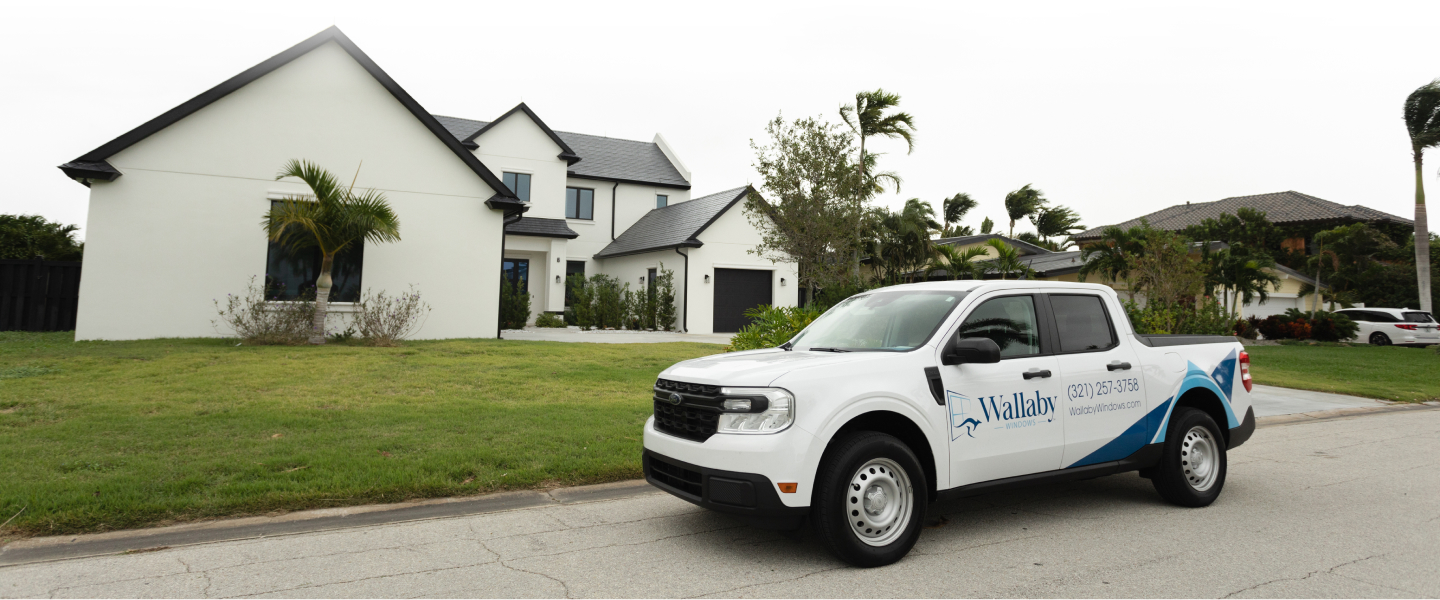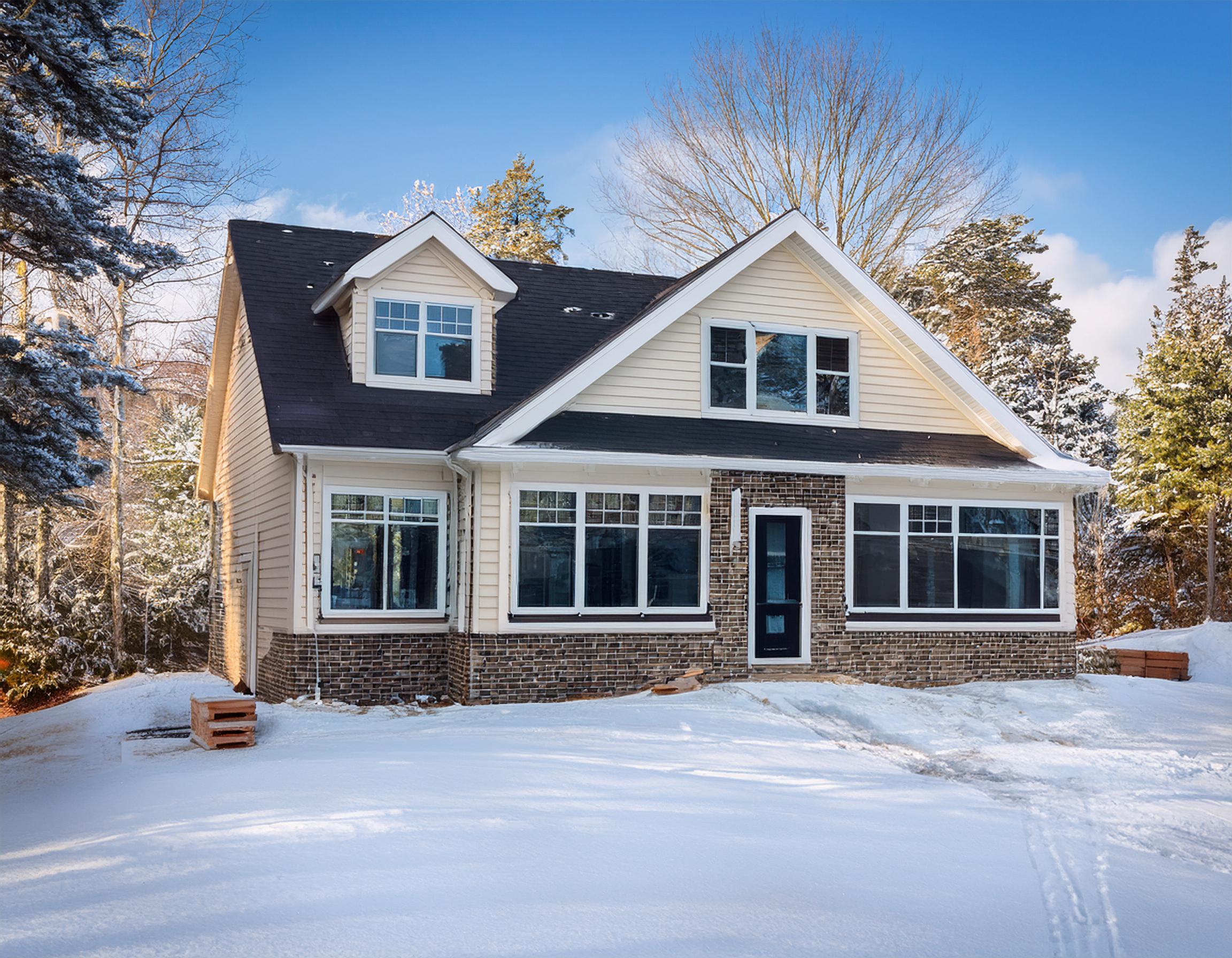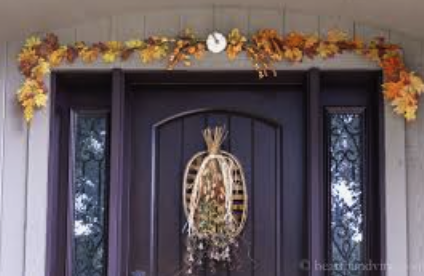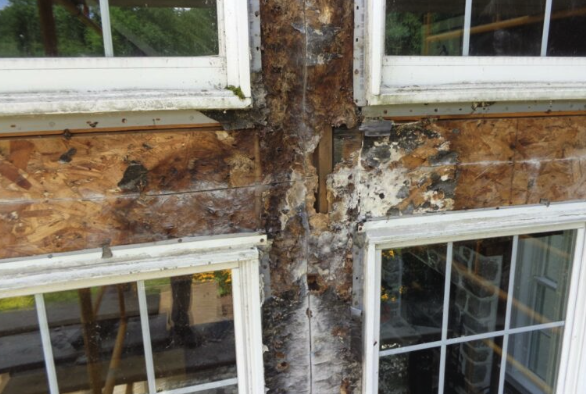Windows & Doors – A Glossary of Key Terms you should know!
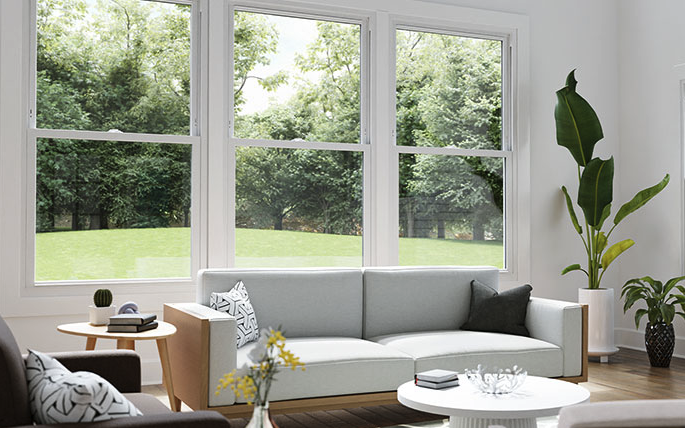
If you're looking for expert advice on your window and door needs, you couldn't have come to a better place! At Wallaby Windows, we understand the confusing terminology that can often be associated with windows and doors. That's why we've put together this comprehensive glossary of key terms – so that everyone (from experienced professionals to first-time DIYers) can stay informed. Read on as we guide you through the language of windows and doors, from opening mechanisms to insulation ratings – everything you need to know about these essential elements is right here!
AAMA
American Architectural Manufacturers Association. A national trade association that establishes voluntary standards for the window, door, storefront, curtain wall and skylight industries.
Aluminum Clad
Aluminum clad is a material option that won’t ding or dent. Extruded aluminum is more durable and increases the structural integrity of the products.
Aluminum
Aluminum is a reliable, energy-efficient material option that provides homeowners with little maintenance and long-lasting quality.
Air Infiltration
Air that passes between a window sash and frame.
Argon Fill
A clear, odorless, and non-toxic inert gas that reduces the thermal conductivity of the airspace between the glass layers.
ASTM
American Society for Testing and Materials. An organization that develops methods for testing materials.
Awning Window
A window unit that is hinged on the top, in which the sash swings outward for ventilation.
Acoustics
The science of sound and sound control.
Adhesive
A substance capable of holding material together by surface attachment is commonly referred to as glue.
Aesthetics
The appreciation of beauty or good taste.
Architectural Style
The characteristic form and detail of buildings from a particular historical period or school of architecture. Some examples include Colonial, Contemporary, Craftsman, Old World and Victorian styles.
Argon
Argon is a safe, odorless, colorless gas, which is heavier or denser than air. It is used to replace the air between the glass panes and adds insulation value. Double or triple-pane windows can be filled with argon gas to help insulate a room and minimize the transfer of heat through the window glass.
Articulating Cap Sill Threshold
An automatically adjusting cap sill that springs up to meet the bottom edge of the door to close off leaks, drafts, insects or other elements from entering the interior of the home through the entryway.
Astragal
A special molding is attached to one of a pair of doors that prevents them from swinging or sliding completely through the opening. Also to prevent air infiltration.
Backerboard
A flat material is used on the face of the house, between the studs and the siding, to provide a nailable surface for the siding.
Balance covers
A snap-in covering that conceals the block and tackle balance system within the window frame, helping to keep dirt and dust out of the chamber.
Bay Window
An angular, multi-panel window, usually made up of a large center fixed unit and two flanking units, projecting out from the wall of the home. The three-window unit usually projects at 9, 15, 30, or 45-degree angles to the wall.
Bevel
To cut to an angle other than a right angle, such as the edge of a board or door.
Block and Tackle Balance System
The block and tackle system utilize a high-density nylon cord pulley action which is attached to a moveable block that travels up and down within a metal chamber. Tension from a heavy-duty coil spring at the top of the block creates the proper resistance necessary for the smooth operation of the window sash.
Bottom Rail
Also known as a lift rail on the bottom sash of a single-hung and double-hung unit. This is the lowermost horizontal member of a sash, door, blind or another panel assembly.
Bow Window
A composite of four or more window units joined together in a radial formation.
Buttlock
The bottom edge of a siding or soffit panel, or accessory piece, opposite the nailing slots, which lock onto the preceding panel.
Butyl
A rubber material seals the glass to the spacer, creating an airtight and water-tight insulated glass unit.
Cam Lock and Keeper
The mechanisms which pull the sash together when placed in the locked position.
Caming
A metal separator that holds individual pieces of decorative glass in place. Caming is typically brass with a variety of decorative finishes.
Casement & Awning Windows
These hinged windows come standard with a sash that cranks outward.
Casing
Molding of varying widths and thicknesses is used to trim out interior or exterior door openings.
Capillary Tube
Small, hollow tubes that allow pressure equalization to prevent glass breakage at high altitude pressures. These should be used in elevations of 7000 ft or more above sea level. Gas insulation cannot be paired with this.
Channel
The area of the accessory trim or corner post where siding or soffit panels are inserted. Channels also refer to the trim itself and are named for the letters of the alphabet they resemble (e.g., J-channel, F-channel, etc.).
ClarityOne Glass
A chemical treatment that when applied to glass, helps to create a smoother surface that won’t attract or hold dirt and dust. Established by PPG Industries.
Clear Glass
Clear glass is standard on all windows and is the base glass provided in windows prior to any upgrades or glazing options being added.
Coastal Hardware
Coastal hardware will consistently stand up to saltwater and other harsh coastal conditions.
Condensation
Water vapor deposits from the air on any cold surface whose temperature is below the dew point, such as a window glass or frame that is exposed to cold outdoor air.
Conduction
The transfer of heat through matter, whether solid, liquid, or gas.
Constant Force Balance System
A modular design of pre-stressed flat stainless steel formed into a coil, providing a smoother, quieter operation of the window. The energy of the balance system remains constant through every point of travel when the window sashes are raised and lowered.
Convection
A transfer of heat through a liquid or gas when that medium hits against a solid surface.
Convex
Curving or bulging outward (the opposite of concave).
Course
A row of panels, one panel wide, running the length of the house from one side to the other, or, in the case of vertical siding, from top to bottom.
Coved glazing beads
A contoured piece of vinyl holds the glass in place within the sash and adds an elegant, finished look.
Desiccant
An extremely porous substance used to absorb moisture and sustain dryness (desiccation) from within a sealed air space of an insulating glass unit.
Design Pressure (DP)
The pressure, positive and/or negative, develops during severe weather events and that can threaten the physical integrity of a home’s integral structure.
Door Face
The wide flat surface of a door.
Door Frame
A complete door frame consists of one header and two jamb legs. A strip of wood called a “stop” keeps the door from swinging through the frame. Stops are available rabbeted (Built-in) or Stitched (applied separately with staples).
Door Height
The vertical measurement of the door ranges from 6 feet, 6 inches to 7 or 8 feet.
Door Jamb
The part of a door frame that surrounds and contacts the edges of the stiles and top rail of a door. Jambs may be classified as (1) “head” or “side” jambs and
(2) “plain” or “rabbeted”.
Door Skin
The front or face panel (usually two or more plies) of a flush door.
Double Channel Lineal
A siding accessory that joins two soffit panels.
Double Hung Window
A window unit that has two operable sashes which move vertically in the frame.
Double-Strength Glass
Glass with an approximate thickness of 1/8”.
Drip Cap/Head Flashing
An accessory is installed with vertical siding to ensure that water drips away from panels and does not infiltrate them; it is also used as a vertical base.
Egress Code
The minimum opening of a window for people to exit or firefighters to enter a building/dwelling. Different states or regions have different code requirements.
ENERGY STAR®
The ENERGY STAR program is a joint venture between the US Environmental Protection Agency (EPA) and the US Department of Energy (DOE) designed to encourage homeowners to purchase energy-efficient products. Using less energy in our homes reduces the number of CO2 emissions released into the atmosphere from burning fossil fuels such as coal, oil and natural gas. The advanced components and design in the ClimaTech™ insulated glass package exceed all performance criteria required by the ENERGY STAR program.
Entry Door
A door is typically found in the front of a home or building.
Exterior Threshold
A threshold non-symmetrically beveled, (the more gradual and longer bevel facing the exterior) which, when secured to the exterior door frame sill and/or finished floor, prevents water from driving under the door.
Extruded Screen Frame
This frame is pressed through a die and is extruded for quality and strength.
Extrusion
A form produced by forcing vinyl through a die.
Face
Refers to the side of a siding or soffit panel that is showing once the panel has been installed.
Face-nailing
The action of fastening directly onto the “face” side of a panel (instead of using the nail hem slot). This practice is generally not used in siding installation.
Fade Protection
With optional glass upgrades, windows can provide up to 99% UV ray protection for the valuables inside your home without noticeably reducing the light coming inside.
Fascia Board
A board is attached to the ends of the rafters between the roofing material and the soffit overhang. The Fascia cap is the covering around that board.
Fenestration
The placement or arrangement and sizes of the windows and exterior doors of a building.
Fixed Lite
A pane of glass is installed directly into non-operating framing members; also, the opening or space for a pane of glass in a non-operating frame.
Fixed Panel
An inoperable panel of a sliding glass door or slider window.
Fixed Window
A window with no operating sashes. Commonly called stationery or picture windows.
Flashing
A thin, flat material, usually aluminum, positioned under or behind J channels, corner posts, windows, etc., to keep draining water from penetrating the home.
Florida Approved
Florida-approved is any product that meets Florida building codes for certain hurricane zones.
Foam Injected
The hollows inside the vinyl master frame are injected with polyurethane foam.
Frame
The material in which window sashes or door panels are mounted.
French Inswing Patio Doors
These doors have wide stiles and rails coupled with 1 ¾ door panels to give you a true French look.
French Outswing Patio Doors
These doors have wide stiles and rails coupled with 1 ¾ door panels to give you a true French look.
French Sliding Patio Doors
The timeless style of these doors offers space-saving sliding configurations, full-perimeter weatherstripping, and adjustable rollers for smooth operation.
Furring/Furring Strip
A wooden or steel framing material, usually 1" x 3", is used to provide an even nailing base. To “fur” a surface means to apply these strips.
Fusion-Welded
The process uses extreme heat and joins vinyl window materials together into one piece.
Garden Windows
Garden windows are three-dimensional and project from the exterior wall of the home. They can be configured with glazing on all sides except the bottom, which serves as a shelf for plants or other keepsakes.
Gas Fill
A gas other than air, usually argon or krypton, is placed between window or skylight glazing panes to reduce the U-factor by suppressing conduction and convection.
Glass
An inorganic transparent material composed of silica (sand), sodium bicarbonate (soda), and calcium carbonate (lime) with small quantities of alumina, boric or magnesia oxides.
Glazing
The process of sealing a piece of glass into a window.
Glazing Bead
A vinyl strip was applied to the window sash around the perimeter of the glass.
Grids (Grills)
Decorative horizontal or vertical bars are installed between the glass panes to create the appearance of the sash being divided into smaller lites of glass. These are also commonly called GBG bars or grills between glass.
Head
The horizontal top portion of the main frame.
Heat Loss
The heat transmission rate is multiplied by the area of the door.
Hinge Jamb
Side jamb in which the door hinges (butts) are applied.
Hinged Patio Doors
These doors elevate elegance and performance with their historically accurate design and are sturdy as they are beautiful.
Hopper Window
A window unit that is hinged on the bottom in which the top of the sash swings inward. I
Impact Resistance
Impact resistance is the ability to withstand high forces or shocks occurring over a short period of time. Homeowners in areas prone to severe weather often consider impact resistance as a significant factor in their home improvement decision-making.
Infiltration
Heat loss due to cold air filtering through cracks or spaces around an exterior door.
Insulating Air Chambers
Various chambers within the sash and master frame, which help to insulate and strengthen the window.
Insulating Glass Unit (IGU)
Two or more panes of glass are separated by a spacer with a hermetically sealed air space.
J-Channel
Integrated extension on the outside of a new construction window for installation applications.
Jamb
The vertical members at the sides of a window frame.
Keeper Rail
The bottom rail of the Double hung sash where the lock keeper is attached.
Knob Latch Set
Door hardware for keeping a door closed and with a spring-operated latch bolt activated by a knob. Also known as a passage set.
Krypton Gas
Krypton gas is denser than Argon gas. It is an inert, nontoxic gas used in insulating windows to reduce heat transfer.
Laminated Glass
A laminated triple layer, comprising a clear flexible polymer sandwiched between two panes of glass. It helps to defend the home by withstanding debris, projectiles, and other unexpected impacts. It is also known as “sacrificial glass”.
Lap
To overlap the ends of two siding panels or accessory pieces to allow for expansion and contraction of the vinyl product.
Lift Rail (or Lift Handle)
Extruded on the horizontal rails of the top and bottom sashes, it is used for raising and lowering the sashes. This will be the bottom rail of the sash on single and double-hung.
Lite
A unit of glass in a window.
Lock Block
A concealed block of wood or particleboard glued inside a door. When installing a lockset, a hole is drilled through the door faces and the lock block. It provides support for the lockset.
Lock-Tilt
A window hardware mechanism that allows both the open/close/lock function of the window and the release to tilt the sash away from or out of the window for cleaning.
Low-E (Low Emissivity) Glass
Microscopic layers of silver and titanium dioxide, which dramatically increase thermal performance and restrict the passage of radiant heat. Microscopically thin, virtually invisible, metal or metallic oxide layers deposited on a window or skylight glazing surface primarily to reduce the U-factor by suppressing radiative heat flow. A typical type of low-E coating is transparent to the solar spectrum (visible light and short-wave infrared radiation) and reflective of long-wave infrared radiation.
Lug/Crimp
The raised “ears” or tabs on a siding panel, created by a snap lock punch, which can be used to lock a siding panel into place when the nailing hem has been removed.
Masterframe
The combination of the head, sill and jamb sections of a window.
Meeting Rail
The part of a single hung window where the top glass sits, and the bottom sash locks and creates a weather barrier.
Miter
To make a diagonal cut, beveled to a specific angle (usually 45°). Sometimes miter cuts are made into an overlapping siding or soffit panel surface, to provide a neater appearance.
Modular Sizing
The sizing format used for vinyl windows. This size allows builders or contractors to match the rough opening size of wood or clad window openings.
Mullion or “Mull”
A component used for connecting multiple units together.
Mylar
A weatherstripping material is present where the sash frame meets the master frame. Adds increased resistance to air infiltration.
Nailing Hem (or Flange)
The section of siding or accessories where the nailing slots are located.
NFRC
National Fenestration Rating Council.
Obscure Glass
Any textured glass (frosted, diffusion, pebble, etc.) used for privacy, light diffusion, or decorative effects.
Operator
Crank-operated device used for opening and closing casement and awning windows.
Oriel Window
Window that features the meeting rail off the center of the frame, usually a 1/3, 2/3 ratio.
Panel
A major component of a sliding glass door, consists of a light of glass in a frame installed within the main (or outer) frame of the door. A panel may be sliding or fixed.
Picture Window
A stationary window that is non-venting.
Plumb
A position or measurement that is truly and exactly vertical, 90° from a level surface.
Polyvinylchloride (PVC)
An extruded or molded vinyl polymer material used in window fabrication and as a thermal barrier for aluminum windows.
Positive Lock
Area below the nailing hem that the buttlock locks into.
Profile
Describes the design of the panel (Clapboard, Dutch lap, Triple 3, etc.).
R-Value
A measure of the resistance to thermal transfer or heat flow. A higher R-value window has a greater resistance to heat flow and a higher insulating value.
Radiation
The transfer of heat in the form of electromagnetic waves from one separate surface to another. Energy from the sun reaches the earth by radiation and a person’s body can lose heat to a cold window or skylight surface in a similar way.
Rough Opening
The opening in a wall into which a window or door unit is to be installed.
Sash
An assembly of stiles and rails made into a frame for holding glass.
Sash limit locks/Child Safety Latches/Night Latches
A feature that allows a window to be safely raised to a certain height.
Scoring
Running a utility knife blade, a sharpened awl, a scoring tool, or other sharp implement across a soffit or siding panel face without cutting all the way through the panel. This weakens the vinyl surface in a specific area and allows the panel to be bent and broken off cleanly.
Sidelite
An assembly of stiles and rails, with or without a wood panel containing a single row of glass panels or lights. Installed on one or both sides of an exterior door frame, especially a front entrance door frame. Sidelights provide light, especially for an entry hall, as well as decorative appeal.
Sill
The horizontal, bottom section of the master frame.
Single Hung Windows
These windows come with one vertically sliding sash in a single frame.
Sliding Patio Doors
A combination of fixed and sliding glass door panels that operate solid brass roller trucks. Available in 2-, 3- or 4-lite configurations with the operable panel available in any position.
Sliding Window
A window that opens and closes horizontally. It is offered in both two and three-lite configurations.
Soffit
Material used to enclose the horizontal underside of an eave, cornice, or overhang. Some soffit panels may also be used as vertical siding.
Solar Heat Gain Coefficient (SHGC)
Measures how well a window blocks heat from sunlight. The SHGC is the fraction of the heat from the sun that enters through a window. SHGC is expressed as a number between 0 and 1. The lower a window’s SHGC, the less solar heat it transmits.
Sound Reduction Optional
Laminated glass options can improve sound control by reducing exterior noise.
Spacer
An object placed between two or more pieces of glass which help to maintain a uniform width between the glass and prevent sealant distortion. Common types are Intercept Spacers- They offer a unique U-Channel design that minimizes conduction for increased efficiency and comfort. U-shaped Design flexes and contracts, reducing seal failing in the in the IGU.
SST Non-Metal Spacer
A solid silicone foam spacer covered with Mylar. It is sealed to the edge of the glass and then sealed with butyl for greater energy efficiency. This solid silicone foam spacer provides superior energy efficiency and does not conduct energy as quickly as metal spacers. Silicone foam is also flexible and helps reduce stress cracks. Generally called a Super Spacer.
Stiffener
Reinforcement made from extruded aluminum,
extruded composite, or roll-formed steel to strengthen vinyl windows and increase their security and DP Ratings.
Stile
The upright or vertical framework pieces of the operational sash and door
Strike Jamb
Jamb opposite the hinge jamb. A jamb on which the lock or passage-set strike plate is installed.
Strike Plate
A metal piece mortised into or fastened to the face of a door frame side jamb to receive the latch or deadbolt when the door is closed.
Structural Sealant
Single component, self-leveling, premium-grade polyurethane sealant with an accelerated curing capacity used to seal gaps, joints, and cracks.
Sweep
A rubber or vinyl strip is applied to the bottom of a door to create an effective seal against the sill (threshold).
Swing
Describes a door system that opens either in (toward the home) or out (away from the home), when in operation.
Tempered Glass
The glass that is strengthened through the process of heating and cooling the surface rapidly. This process allows the glass to withstand greater than normal forces on its surface. When it breaks, it shatters into small pieces to reduce hazards. Tempered glass is standard on all Entry Doors and Sidelites.
Thermal Break
The addition of a thermal insulating material between two thermally conductive materials.
Thermoplastic Spacer
Integrated spacer extruded and applied directly to the glass, creating a true chemical bond that adheres to the panes through expansion and contraction with minimal conduction of heat or cold.
Tilt Latch
A mechanism that when depressed allows the sash to tilt in from the frame for easy cleaning.
Traditional Sizing – is the industry standard sizing format used for all vinyl windows.
Transom
A horizontal member separates a door from a window panel above the door or separates one window from another.
Transom Window
A window that fits over the top of a door or other window.
Trim
Millwork, primarily moldings and/or trim to finish off (trim around) window and door openings, fireplaces, walls and other members.
UI
A united inch (common abbreviation of U.I.) is a term that is used to determine the linear feet of framing calculated by adding width and length W+L=UI.
U-Value
Thermal conductivity (or the U-Factor) is the property of a material that indicates its ability to conduct heat. The lower the U-value, the better the insulating value.
UV (Ultraviolet Light)
The invisible rays of the spectrum are outside of the visible spectrum at its short-wavelength violet end. Ultraviolet rays are found in everyday sunlight and can cause fading of paint finishes, carpets and fabrics.
UV Reflection
The percentage of ultraviolet rays being blocked rather than being transmitted through the window’s glass unit. The higher the number, the lower the percentage of ultraviolet rays being transmitted through the window.
Vinyl
Polyvinyl chloride material, is used for window frames and fabrication.
Vinyl Clad
Windows offer homeowners the beauty of natural wood combined with the durability and ease of vinyl. An interior-facing traditional wood frame paired with a weather-resistant vinyl exterior frame.
Virgin Vinyl
Vinyl that is not made out of recycled material.
Visible Light Transmittance
A measure of the amount of visible light that passes through the glazing area of a window.
Visible Transmittance (VT)
The percentage or fraction of the visible spectrum (380 to 720 nanometers) is weighted by the sensitivity of the eye that is transmitted through the glazing.
Weatherstripping
A strip of material used to seal the joint between the window sash and frame. Also used with our Entry Doors, the flexible material surrounding the door protects your home from air infiltration.
Windload
Force is exerted on a surface by the movement of air.
Wood Composite
Wood composite offers homeowners a natural wood interior ready for paint or stain to match interior décor and exterior wood components that are fully treated with water-repellent wood preservatives.
Wood
Wood offers homeowners traditional looks with natural wood finished interiors that are ready for paint or stain to match any décor.
With the right information and understanding of windows and doors, you are much better equipped to make an informed purchase decision. The glossary we have provided should provide you with the terminology needed to help you navigate your way through the replacing process.
At Wallaby Windows, we are proud to provide quality services for you and are passionate about offering the best windows and doors that match your needs, budget, lifestyle, and home design. If you’re planning your window or door replacement anytime soon, don’t hesitate to give us a call! Schedule your free, in-home consultation today and let us help make replacing your windows and doors an easy task!
Find a Wallaby Windows Location Near You
